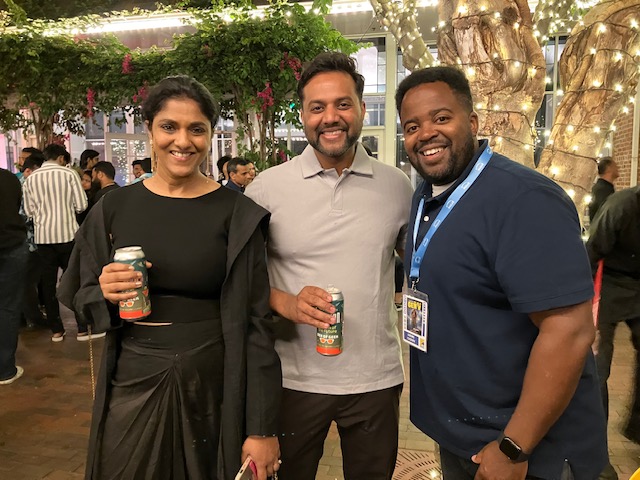
15 Aug A Reflection on San Diego Comic-Con Amid the Strike
BY ANDRE CHERRY
Amid the strikes in the film industry, I made the difficult decision, like so many other fans, to attend San Diego Comic-Con. Comic-Con is an annual comic book and popular arts convention that was initially founded as the Golden State Comic Book Convention in 1970. Its name officially changed to San Diego Comic-Con (SDCC) in 1973, and then again in 1995 when it became Comic-Con International: San Diego (CCI). At its core, Comic-Con celebrates the world of comic books, but over the last few decades it has evolved to include more of the pop culture universe, such as film and television.
By CCI’s count, over 130,000 people pass through the San Diego convention doors to attend SDCC each year. Hundreds of thousands more attempt to secure badges to this highly coveted event only to come up empty handed. There is an entire process to obtain badges and hotel rooms that begins several months before the convention and requires a high level of strategy, patience, and luck. The odds are not in one’s favor to secure a badge. For me, it took several years before I hit the jackpot to attend “the con” for the first time in 2014.
Making the annual pilgrimage to SDCC can be life affirming. People from all walks of life and varying professions come together as one to celebrate pop culture. I’ve made friendships with people of diverse backgrounds who live in different states and continents. And I’ve lost track of the number of marriage proposals I’ve witnessed while at comic-con (yes, this is a thing).
As fortunate as I felt to have secured a badge this year, I contemplated not going to the convention due to the ongoing Writers Guild of America (WGA) strike which began 79 days earlier. The Screen Actors Guild – American Federation of Television and Radio Artists (SAG-AFTRA) joined the picket lines on July 14th, only 6 days prior to the start of SDCC. The strikes mean that WGA and SAG-AFTRA members, including high profile actors and creatives, could not attend SDCC to promote upcoming releases. This led many of the studios that typically attend SDCC–such as MARVEL, Disney, Lucas Films, HBO, Sony, Netflix, and Universal–to back out of attending altogether.
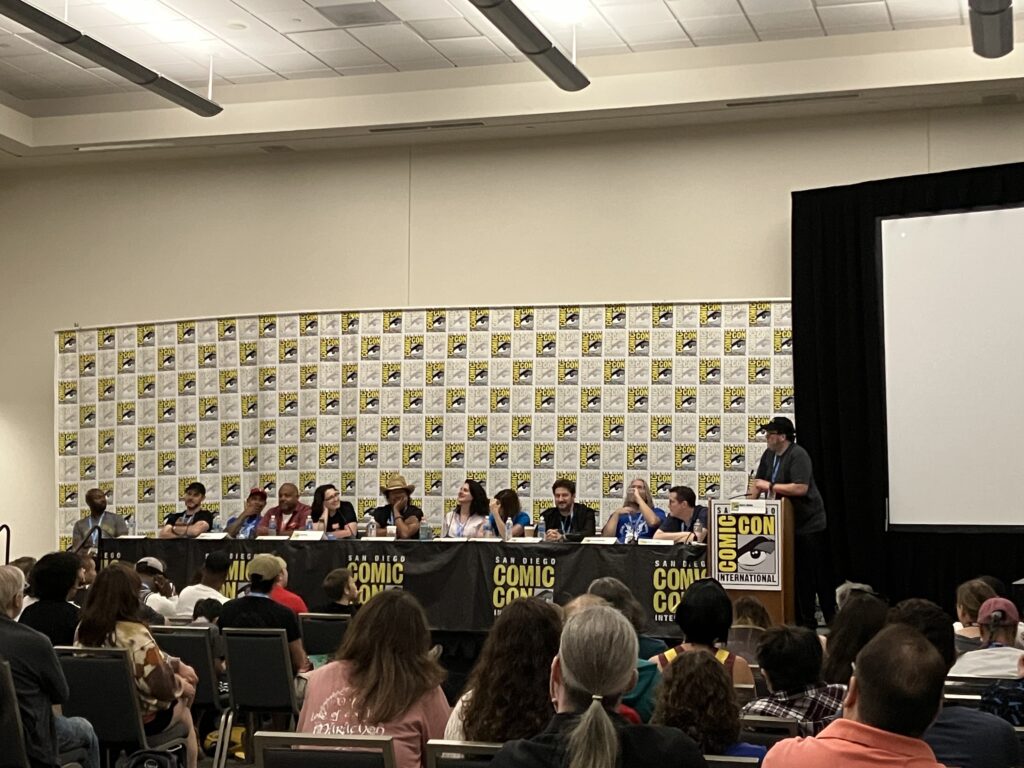
These studios typically promote their projects inside “Hall H” at the annual geek convention. Hall H is a massive room at the convention center where many of the film and television show panels take place. As a MARVEL fan, this is generally where I go to hear the big announcements for the upcoming MARVEL cinematic universe phases. I’ll never forget seeing early footage from Black Panther with 6,500 other fans in 2017. That moment was so powerful: watching Disney roll out a new MARVEL blockbuster with a cast composed of mainly Black superstars. No one had ever witnessed something of that magnitude before. It felt like the start of a movement based on equity.
I also remember watching the premiere trailer for season two of Stranger Things with a young cast that was just as stoked as we were to be watching the trailer for the first time, together. It was special. But these moments only happen when the actors and writers take part in the convention. Because they couldn’t attend this year, some of the panels were canceled days before and the rooms were less full than in years’ past. This year felt different and it was noticeable.
However, I did get a chance to attend an immersive themed party and panel promoting an upcoming Indian sci-fi film codenamed Project K hosted by Den of Geek. The occasion marked Project K’s first appearance at SDCC. It was one of the only panels that included the actors since Indian productions are not under the rules of the WGA and SAG-AFTRA strike. The stars had a fun time and it was refreshing to watch these Indian movie stars enjoy their Hall H moment in the spotlight.
This year also meant that attendees could spend more time on the floor shopping for SDCC comics and toy exclusives, hanging out at off site activations, and eating at restaurants in the Gaslamp Quarter. And although there was less excitement with the panels this year, attendees had a unique opportunity to stand in solidarity with the striking writers and actors. I sat in on a panel, “Inside the Writer’s Room: Building a Better Future for Writers,” which was jam packed with support for the creatives.
Showrunner Mark A. Altman (Pandora, The Librarians, Castle) moderated this annual panel and was joined by other Hollywood showrunners. I found the experience to be really worthwhile as all of these professional creatives shared their insights into the state of television today and what’s at stake as writers fight for their futures. The room was filled with other emerging writers like myself who soaked in the panel’s every word. They shared their stories of “breaking in” but admitted they had no advice on a clear path for aspiring writers trying to make it in today.
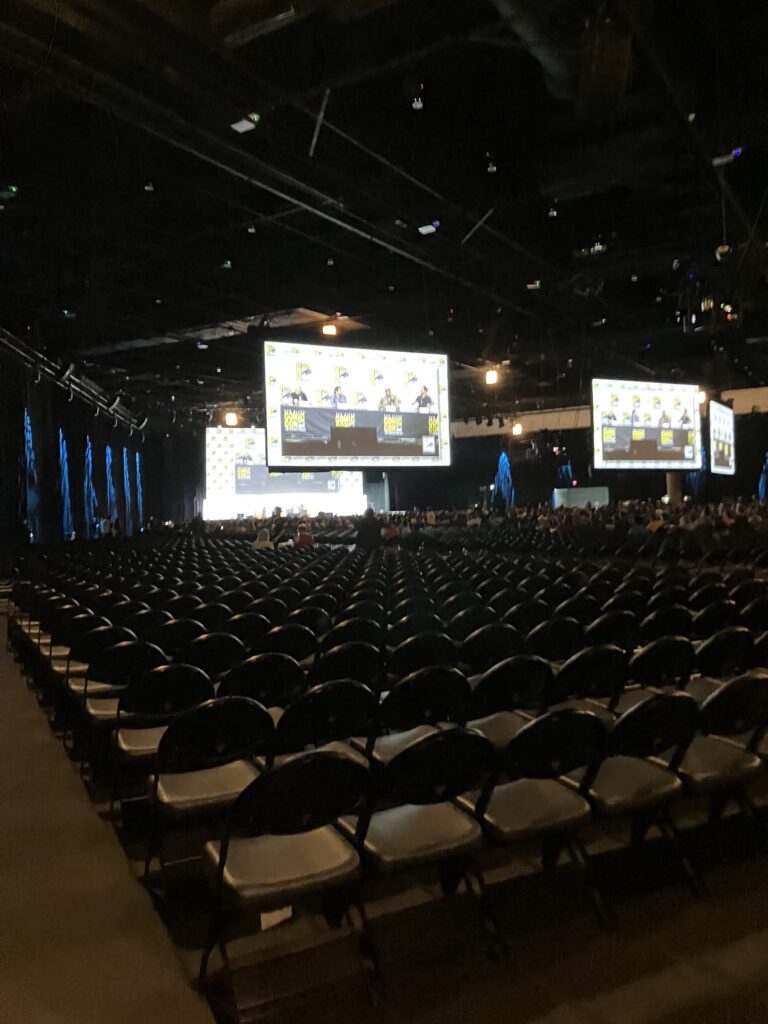
The panelists stated that everything with the television writing process has shrunk over time: fewer weeks of paid writing, fewer writers, and smaller writing rooms. Even worse, they feel production and writing have been separated intentionally. Studios want the writing completed before production begins, at which point the writing staff stays home during shooting. The writing staff doesn’t ever see production. These writers work for 20-25 weeks but do not have the experience of getting on set and meeting actors.
An analogy was shared that “being a writer without going to set is like being a surgeon without going to surgery,” said Terry Matalas (Star Trek: Picard Season 3, 12 Monkeys). Going to set as a writer allows one to see their words spoken live. Maybe those ten lines of dialogue can be accomplished in fewer words or by a certain look from an actor. Writers then edit their scripts in real time. Being on set helps a writer see what works and what doesn’t.
How are writers able to manage shows when they aren’t allowed to go to set? These showrunners admitted that it’s frustrating that young writers have a cap on what they will learn and how far they will be able to go. A question was posed in the room: “Who will be running these shows? Someone who hasn’t been on set before?” It left the panel silent for several moments. Under the current system, no one knows what the future will look like for upcoming writers. This is why WGA and SAG-AFTRA are fighting for the next generation of writers and actors.
As the strike carries on, we will continue to see similar shifts in industry spaces for the next year. This year’s SDCC was different from previous iterations of the con, and that’s okay. WGA and SAG-AFTRA are fighting for something bigger than San Diego Comic-Con. These unions remain committed to ensuring the future of the industry is fair for the next generation of professional creatives.
*Featured Image: Image of Andre alongside Kalki 2898-AD Producer Swapna Dutt. Courtesy of Andre Cherry.
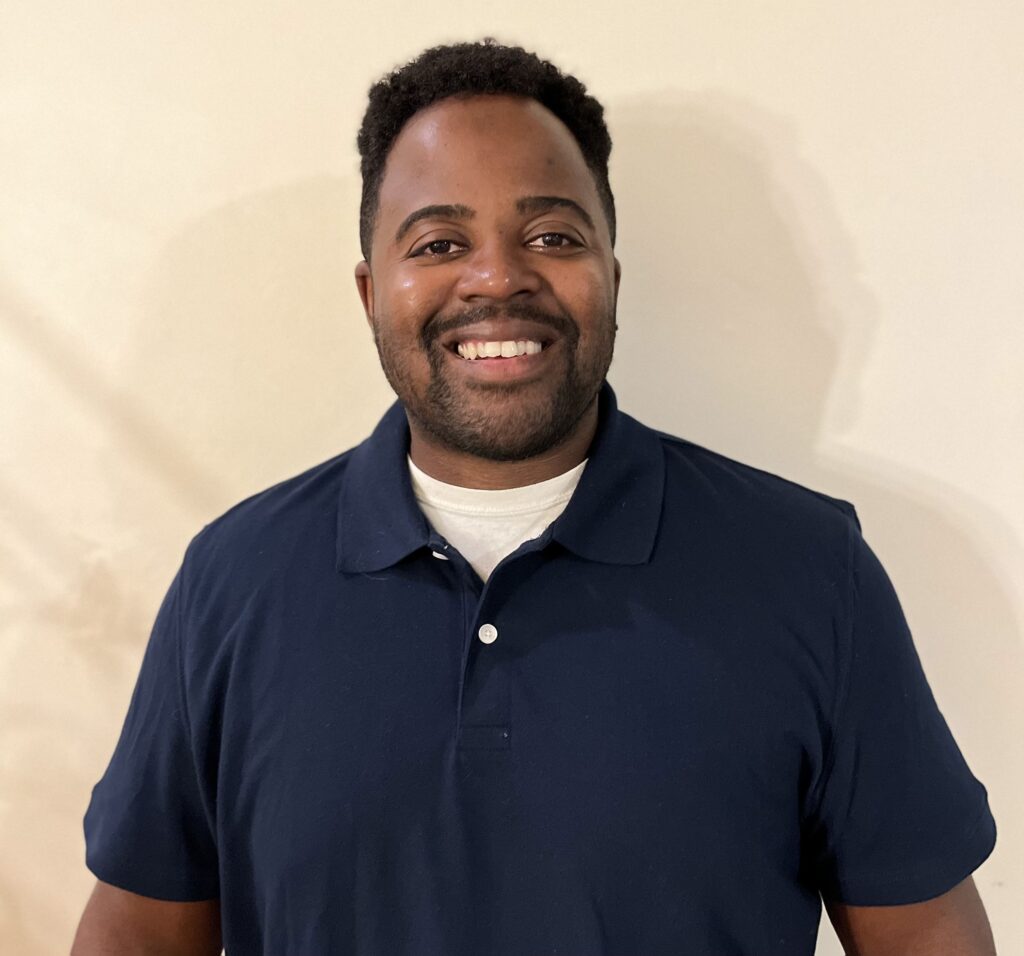
Andre Cherry’s love of storytelling compels him to create art. He is a former cinéSPEAK Philly Beat Fellow, background actor, and writer. His screenplays have placed within the Austin Film Festival and Stowe Story Labs. Andre is also an avid sports fan and hosts a college football podcast called The Cherry Pickin’ Podcast.
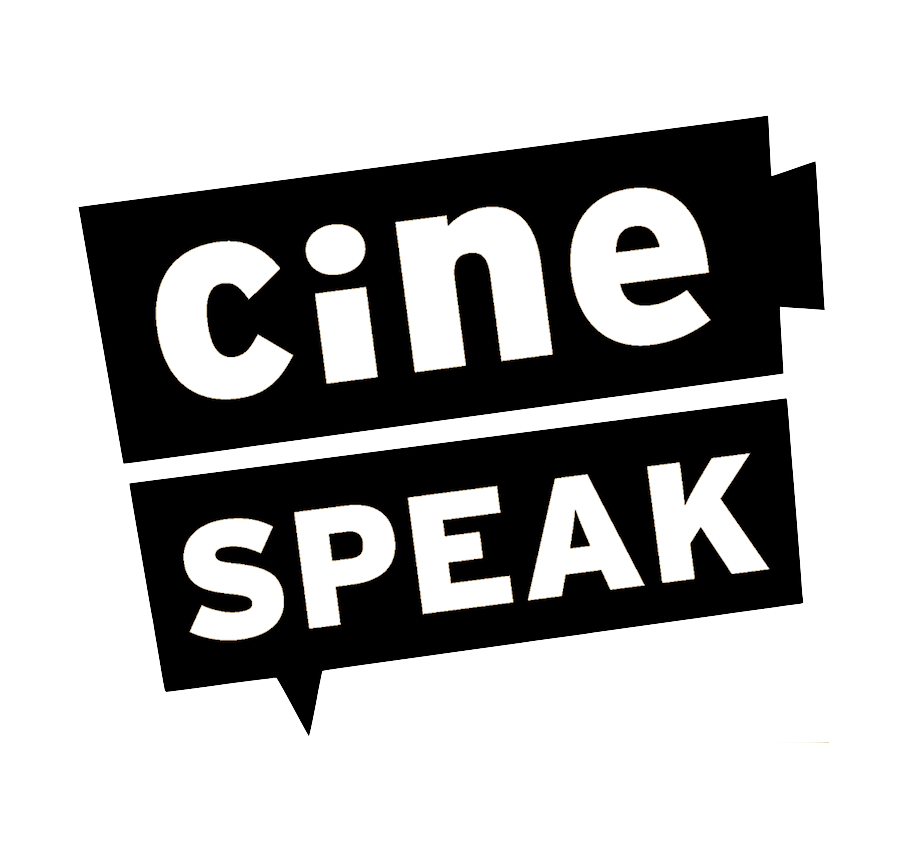
Sorry, the comment form is closed at this time.